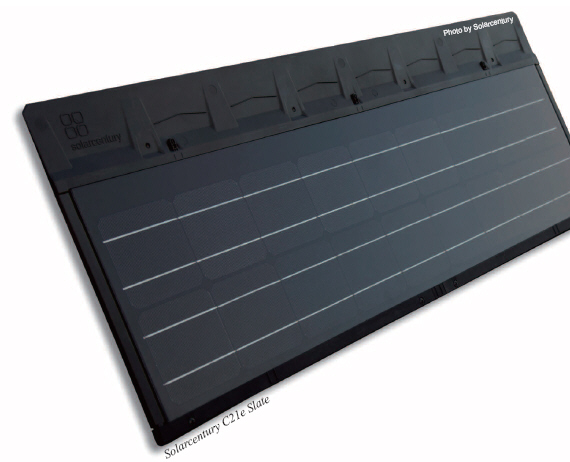Solarcentury, a U.K.’s experienced solar energy company, was founded in 1998 to address the threat of climate change by reducing CO2 emissions through the application of solar energy by Founder and Executive Chairman, Jeremy Leggett.
They design and supply solar energy solutions for the built environment selling solar Photovoltaic (PV) panels, PV mounting systems and solar inverters. They’re envisaging solar tiles on the roof of every building, backed up by other micro renewables, supplying clean power and achieving deep cuts in carbon emissions.
Reported by Stella Lee (pved1@infothe.com)
.jpg) Could you tell us a little about Solarcentury? Could you tell us a little about Solarcentury?
Established in 1998, Solarcentury designs, manufactures and installs solar photovoltaic systems & products and now operates across Western Europe. Solarcentury is a company with a purpose: to drive forward the change to renewable and clean solar energy by being the leader in building integrated solar products. Our products are carefully designed to perform and to last. We believe we have now developed more solar products to replace building materials than anyone else.
Please give us an explanation of SolarAid project?
SolarAid is a separate organization, started by Solarcentury via a donation in 2006. SolarAid seeks to confront humanity’s greatest challenges?climate change and poverty?by harnessing our greatest resource, the power of the sun. The burning of kerosene and the resultant indoor air pollution harms many millions of people across the world. SolarAid replaces kerosene with clean and affordable solar lighting and creates local businesses to generate income in the community. SolarAid also provides power for schools and is currently working on 50 schools in Zambia using PV modules donated by Solarcentury. Employees from Solarcentury volunteer to help SolarAid in fund-raising and project work.
The PV industry has fast changed how we see the world. What are the kinds of changes you see ahead?
Approaching Grid Parity for solar generated electricity is the next fundamental change. The general realization that solar electricity is competitive with other generation technologies coupled with the fact that we must leave the coal in the ground and oil is ever harder to extract and at peak production will cause a leap in the scale and scope of the industry.
What’s an example of how an industry might adapt to these changes?
The industry needs to mature fast and start talking to the market more than it talks to itself which is what it does today. In particular, the marketing of solar energy has to move on fast from pictures of flowers and green fields and really engage in customer benefits.
.jpg) So, how do companies make money in these unpredictable markets? So, how do companies make money in these unpredictable markets?
While the markets are still necessarily influenced by government policy and moreover subject to rapid and unexpected changes in policy, then, this will continue to be a challenge. Conventional business wisdom says that a company must focus and do a few things well. In this state of flux, this is a risky strategy. You need to act broadly and be very agile to take the opportunities as they arise while fundamentally developing your strategy for the grid parity future.
What has been the most exciting solar development of the last years?
Well, I’d have to say our quiet revolution in solar building products. We have just won a Queen’s Award for Enterprise and Innovation in the U.K., in particular for our solar electric roof tile, the C21. Over time, we all know that society has to generate electricity in a clean and sustainable way. Our solar tiles are now part of buildings being erected every day with solar becoming a part of the built environment, as it should be.
.jpg)
What is the biggest challenge faced by the solar industry at the moment?
The combination of rapidly changing markets through unexpected changes in government policy, falling module prices & margins and ridiculously low company valuations slowing down the investment cycle makes for an exceptionally challenging trading environment. And let’s not forget the banks and the recession!

How can that challenge best be overcome?
In part by faith in the future, that solar really will be a key component of the energy mix and that point is not so far away and we must step up the efforts to inform governments and deal with the counter-lobby of the incumbent energy producers. In the meantime you need great products, great customer service and outward-looking agile management and employees that can respond to opportunities as they arise and make the most of the challenges. The industry can expect a few more years of uncertainty until Grid Parity really starts to transform the market. Then that will be a whole new, and welcome, challenge.
Stella Lee is Editor of InterPV. Send your comments to pved1@infothe.com.
For more information, please send your e-mails to pved@infothe.com.
ⓒ2011 www.interpv.net All rights reserved. |


